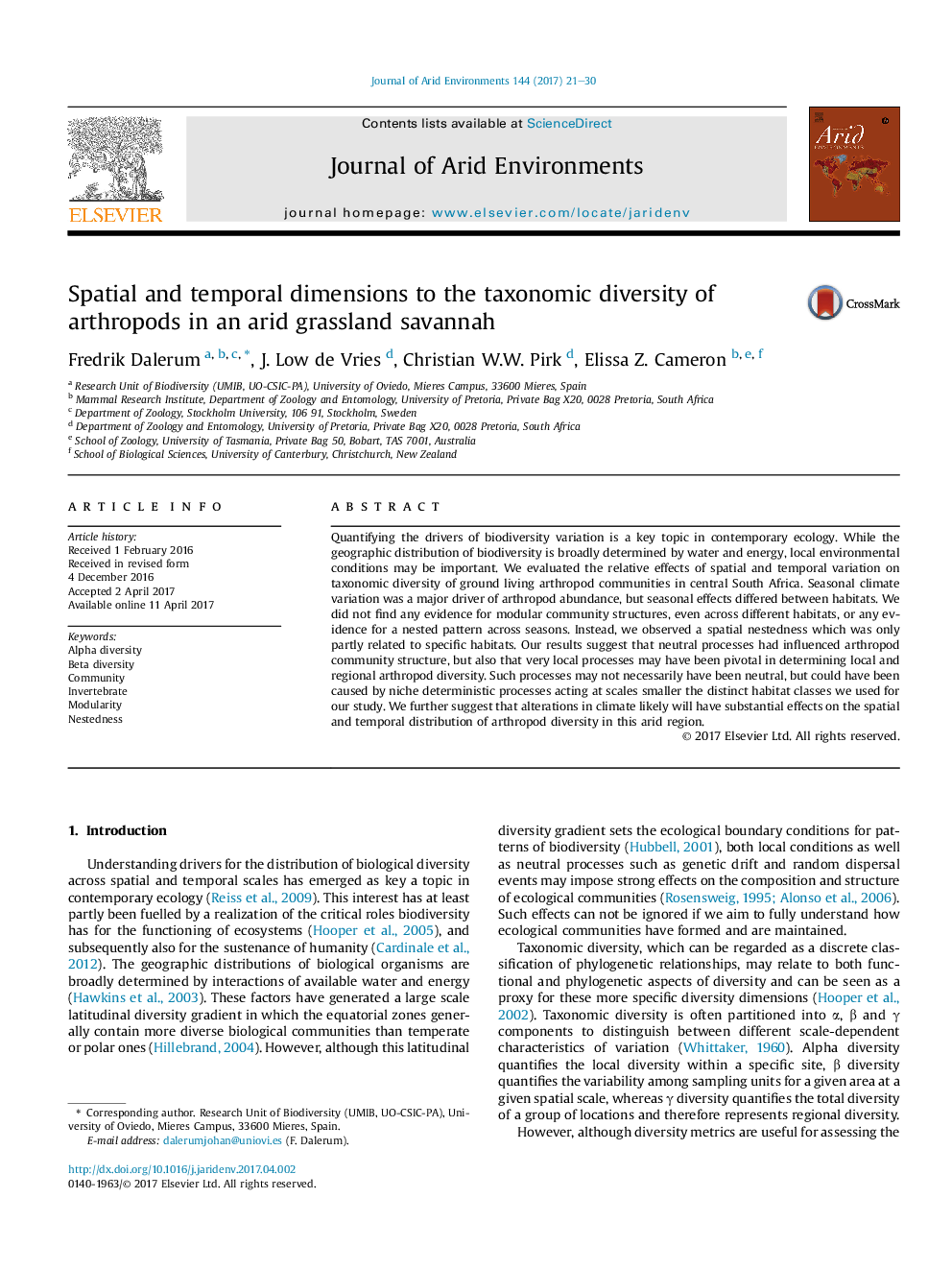| Article ID | Journal | Published Year | Pages | File Type |
|---|---|---|---|---|
| 5744362 | Journal of Arid Environments | 2017 | 10 Pages |
â¢Habitats influenced seasonal variation of arthropod abundance in a grassland savannah.â¢Neutral processes may have been important for shaping arthropod communities.â¢Local characteristics within habitats influenced arthropod community structure.â¢Climate alterations may shift the spatial and temporal distribution of arthropod diversity.
Quantifying the drivers of biodiversity variation is a key topic in contemporary ecology. While the geographic distribution of biodiversity is broadly determined by water and energy, local environmental conditions may be important. We evaluated the relative effects of spatial and temporal variation on taxonomic diversity of ground living arthropod communities in central South Africa. Seasonal climate variation was a major driver of arthropod abundance, but seasonal effects differed between habitats. We did not find any evidence for modular community structures, even across different habitats, or any evidence for a nested pattern across seasons. Instead, we observed a spatial nestedness which was only partly related to specific habitats. Our results suggest that neutral processes had influenced arthropod community structure, but also that very local processes may have been pivotal in determining local and regional arthropod diversity. Such processes may not necessarily have been neutral, but could have been caused by niche deterministic processes acting at scales smaller the distinct habitat classes we used for our study. We further suggest that alterations in climate likely will have substantial effects on the spatial and temporal distribution of arthropod diversity in this arid region.
Graphical abstractDownload high-res image (160KB)Download full-size image
